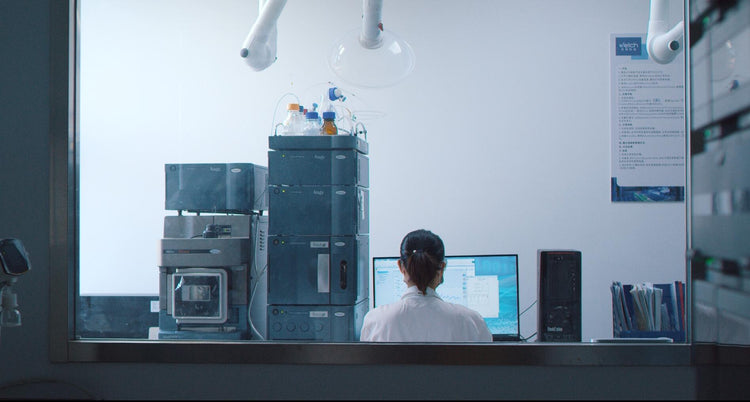
Recently, I have been involved in a project focused on the development of isomers of lycopene, a natural pigment found in food that belongs to the carotenoid family. Over the years, research has unveiled various functionalities of lycopene, including its antioxidant properties, mutation inhibition, reduction of nucleic acid damage, and its role in decreasing cardiovascular diseases and preventing cancer. As a result, lycopene has emerged as one of the globally popular mainstream health products.

Figure 1 Lycopene structure
Lycopene is a long-chain hydrocarbon with 13 carbon-carbon double bonds. Due to the presence of 11 conjugated double bonds, it is highly susceptible to cis-trans isomerization. The most favorable isomers are 5-cis, 9-cis, 13-cis, and 15-cis due to the steric hindrance of methyl groups.

Figure 2 Chromatogram of lycopene sample tested on normal phase silica gel column
Due to the abundance of isomers, acquiring standard reference materials incurs significant expenses. To achieve cost-effective qualitative analysis, is it feasible to utilize mass spectrometry for the identification of each peak?
Can normal-phase chromatography be coupled with mass spectrometry?
Upon researching relevant information online, there are conflicting opinions. Some argue that low ionization is not suitable, while others suggest that low ionization can be addressed by switching to an APCI source. Additionally, concerns have been raised about using normal-phase chromatography with n-hexane as the mobile phase, as it may lead to ignition risks in the APCI source under high temperature and voltage conditions.

In the midst of diverse opinions, guided by the principle of ‘self-reliance for self-sufficiency,’ I came across a relevant literature article: Xia, B., Gao, Y., Ji, B. et al. Analysis of Compounds Dissolved in Nonpolar Solvents by Electrospray Ionization on Conductive Nanomaterials. J. Am. Soc. Mass Spectrom. 29, 573–580 (2018).
https://doi.org/10.1007/s13361-017-1873-y The literature extensively discusses the issues related to coupling normal-phase chromatography systems with mass spectrometry.

In our routine use of mass spectrometry, the most common ionization source is Electrospray Ionization (ESI). ESI is a soft ionization technique suitable for compounds that are easily ionized or inherently charged. Therefore, polar solvents such as methanol and acetonitrile are often used as mobile phases. In normal-phase chromatography, nonpolar solvents like n-hexane are less suitable due to poor conductivity and low dielectric constant, making them unsuitable for compound ionization. As a result, normal-phase chromatography is rarely used with ESI-MS. If it is necessary to use ESI ionization with a normal-phase chromatography system, a small amount of polar solvent can be added to the nonpolar mobile phase to enhance the ionization of compounds.
The article also describes the use of a novel ion source made from conductive nanomaterials, eliminating the need to add polar solvents to the nonpolar mobile phase in normal-phase chromatography. This approach allows for high ionization of compounds.
In summary, normal-phase chromatography can be coupled with mass spectrometry, but it is not well-suited for ESI ion sources. If normal-phase chromatography is desired, it is advisable to consider coupling it with an APCI source or the newly described ion source using conductive nanomaterials.

